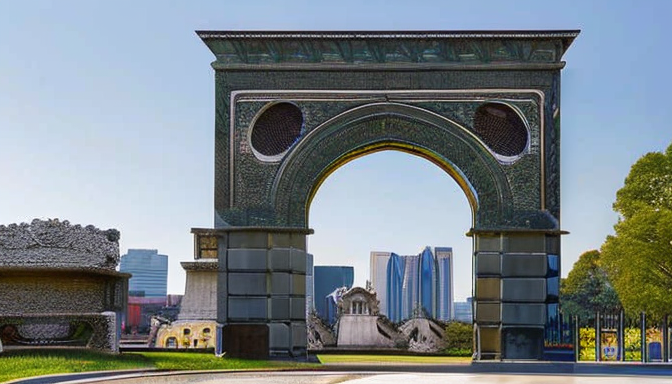Karachi is a city that whispers stories through its historic monuments. Each building, each mosque, and each monument stands as a testament to the rich tapestry of cultural heritage. Walking through the streets of Karachi, you can feel the echoes of the past. Imagine standing before the stunning Frere Hall, with its Gothic architecture and lush gardens. It’s like stepping into a time machine!
These historic sites are not just pretty facades; they are windows into the soul of the city. The Mohatta Palace, for instance, showcases a blend of indigenous and colonial styles. Its vibrant pink stone and intricate designs tell tales of the past. Each corner of these monuments reveals something new, like pages in a book waiting to be read.
But why should we care? Because these buildings are more than just stone and mortar. They represent the identity of Karachi. They are symbols of resilience, culture, and history. Preserving them is crucial, not just for nostalgia, but for future generations. We need to keep these stories alive. After all, what’s a city without its history?
So, the next time you wander through Karachi, take a moment to appreciate these architectural gems. They hold the beauty and struggles of a city that has seen it all. Let their stories inspire you!
Architectural Styles of Karachi’s Monuments
Karachi is a city where history whispers through its magnificent monuments. Each structure tells a story, revealing layers of time and culture. The architectural styles here are as diverse as the people who inhabit the city. From the grand colonial buildings to the intricate indigenous designs, Karachi’s skyline is a tapestry woven with influences from various eras.
Take a stroll through the streets, and you’ll encounter a mix of styles:
- Colonial Architecture: Structures like the Frere Hall showcase the British colonial era’s grandeur, with tall columns and detailed facades.
- Indigenous Designs: The Quaid-e-Azam’s Mausoleum reflects Islamic architectural elements, featuring stunning domes and beautiful tile work.
- Art Deco Influence: Some buildings, like the iconic Sadequain’s murals, display the vibrant art deco style, blending modernity with tradition.
These architectural gems are not just buildings; they are the heartbeats of Karachi. They remind us of our past and inspire future generations. However, preserving these structures is crucial. Each monument is a chapter in Karachi’s story, and losing them would be like losing pages from a beloved book. So, next time you pass by a historic site, take a moment to appreciate its beauty and significance. After all, these are not just monuments; they are the soul of the city.

Preservation Efforts and Challenges
Karachi is a city rich in history, and its historic buildings, mosques, and monuments tell stories that span centuries. These structures are not just bricks and mortar; they are the heartbeats of a culture that has evolved over time. However, preserving these architectural treasures is no easy task. Urban development often clashes with the need to maintain these sites. Think of it like trying to keep a delicate flower alive in a bustling city. The pressures of modern life can easily overwhelm it.
Many organizations and local communities are stepping up to protect these monuments. They are working hard to ensure that future generations can enjoy them. For instance, groups are conducting restoration projects on historic mosques, ensuring that their intricate designs are not lost to time. Yet, challenges abound:
- Funding: Many projects struggle to find the necessary financial support.
- Awareness: Not everyone understands the importance of these sites.
- Urbanization: Rapid city growth often threatens the integrity of these structures.
It’s a balancing act, really. On one hand, you have the need for progress and development. On the other, the desire to preserve a rich cultural heritage. The struggle is ongoing, but with each effort, we get closer to ensuring that Karachi’s historic monuments continue to inspire awe and admiration. After all, these buildings are more than just old walls; they are stories waiting to be told.
Frequently Asked Questions
- What are some of the most famous historic monuments in Karachi?
Karachi is home to several iconic monuments, including the Quaid-e-Azam’s Mausoleum, Mohatta Palace, and the Frere Hall. Each of these sites tells a unique story about the city’s rich cultural heritage and architectural diversity.
- How do architectural styles reflect Karachi’s history?
The architectural styles of Karachi’s monuments are a blend of colonial, Islamic, and indigenous designs. This fusion showcases the city’s evolution and the various cultural influences that have shaped its identity over the years.
- What challenges do preservation efforts face?
Preservation efforts in Karachi often struggle against urban development, lack of funding, and environmental issues. These challenges make it crucial for local communities and organizations to advocate for the protection of these historic treasures.
- How can I contribute to preserving Karachi’s historic monuments?
You can help by raising awareness about the importance of these monuments, participating in local preservation initiatives, or even volunteering with organizations dedicated to maintaining Karachi’s cultural heritage.